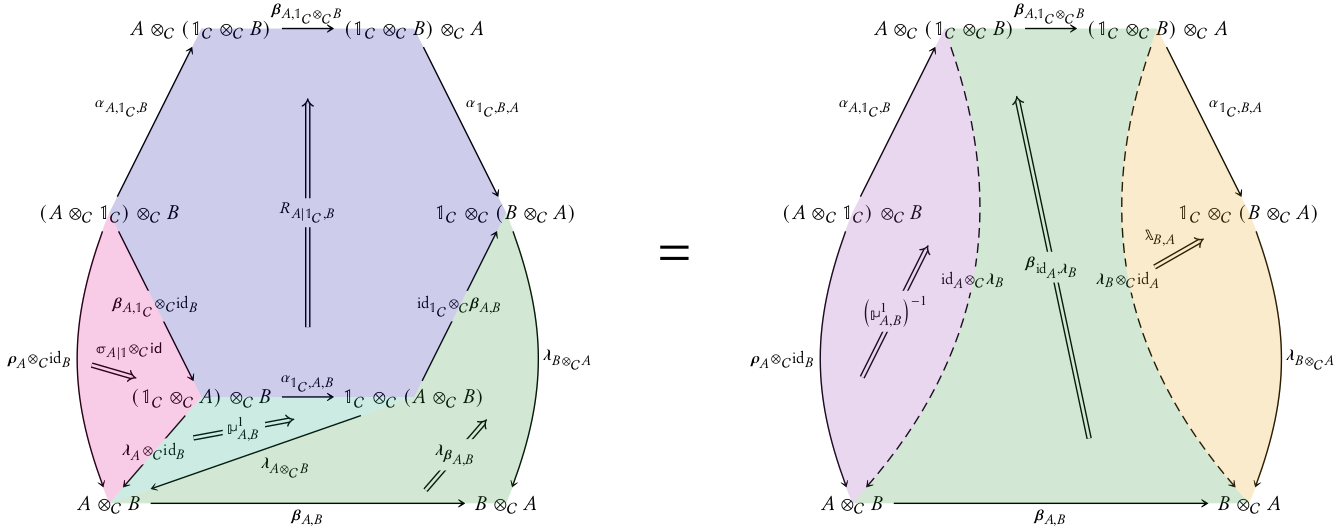I found a reference which discusses precisely this issue:
[Hou07] Robin Houston. ‘Linear Logic without Units’. PhD thesis. University of Manchester, 2007, p. 213. URL:https://arxiv.org/abs/1305.2231
There, you find the following remark at the start of Section 3.3:
These definitions [of braided monoidal bicategories in the earlier literature] both take the unit to be strict ― in terms of our definition below, they take the $1$-cells $s_{A,\mathbb{I}}$ and $s_{\mathbb{I},A}$ and the $2$-cells $U_{A|\mathbb{I}}$ and $U_{\mathbb{I}|A}$ to be identities [these are the cells this question asks about]. The justification for such a restriction is presumably the reasonable expectation that a coherence theorem for tetracategories would show every braided monoidal bicategory to be suitably equivalent to one with such a strict unit. Since an expectation, however reasonable, is not a proof,we have opted to eschew the modest simplification that such a restriction brings. Thus the definition below is conceivably the first that includes all the structure known to be necessary at its natural level of strictness, though we do not claim that any new insight was needed to formulate it. (It is not unimaginable that further axioms should yet be found wanting, though the results of Chapter 4 provide strong evidence that these axioms do suffice.)
Houston then goes on to define braided monoidal bicategories including the $2$-cells $\sigma\mspace{-11.mu}\sigma_{\mathbf{1}|A}\colon\lambda_{A}\Longrightarrow\rho_{A}\circ\beta_{\mathbf{1}_{\mathcal{C}},A}$ and $\sigma\mspace{-11.0mu}\sigma_{A|\mathbf{1}}\colon\rho_{A}\Longrightarrow\lambda_{A}\circ\beta_{A,\mathbf{1}_{\mathcal{C}}}$ as part of the data. These are required to satisfy coherence conditions, which Houston states for $\mathsf{Gray}$-monoids.
Here's the part of their definition (Definition 3.9) relevant to this question (the rest of it goes as usual, say as in [Johnson–Yau, Definition 12.1.6]):
Definition. A braided monoidal bicategory $(\mathcal{C}$, $\otimes_{\mathcal{C}}$, $\mathbf{1}_{\mathcal{C}}$, $(\alpha,\alpha^{\bullet},\phi,\phi^{\bullet})$, $(\lambda,\lambda^{\bullet},\eta,\eta^{\bullet})$, $(\rho,\rho^{\bullet},\epsilon,\epsilon^{\bullet})$, $\pi\mspace{-9.5mu}\pi$, $\mu\mspace{-10.0mu}\mu$, $\lambda\mspace{-10.0mu}\lambda$, $\rho\mspace{-10.0mu}\rho$, $(\beta,\beta^{\bullet},\gamma,\gamma^{\bullet})$, $R_{-,-|-}$, $R_{-|-,-}$, $\sigma\mspace{-11.mu}\sigma_{\mathbf{1}|A}$, $\sigma\mspace{-11.mu}\sigma_{A|\mathbf{1}})$ consists of

with components

- Right Triangulators. An invertible modification

with components

satisfying the following conditions:
- [...] (usual requirements for braided monoidal bicategories ($(1,3)$-crossing, $(3,1)$-crossing, $(2,2)$-crossing, and Yang–Baxter), as defined in [Johnson–Yau, Definition 12.1.6]);
- We require the $2$-cell $\sigma\mspace{-11.mu}\sigma_{\mathbf{1}|A}$ to be compatible with the left hexagonator $R_{-,-|-}$ of $\mathcal{C}$ in that we have an equality

of pasting diagrams in $\mathcal{C}$.
- We require the $2$-cell $\sigma\mspace{-11.mu}\sigma_{A|\mathbf{1}}$ to be compatible with the right hexagonator $R_{-|-,-}$ of $\mathcal{C}$ in that we have an equality

of pasting diagrams in $\mathcal{C}$.
Finally, Houston proves some extra coherence conditions for the "triangulators" $\sigma\mspace{-11.mu}\sigma_{\mathbf{1}|A}$ and $\sigma\mspace{-11.mu}\sigma_{A|\mathbf{1}}$, again in the $\mathsf{Gray}$-setting (Propositions 3.12 and 3.13). I believe these take the following forms for bicategories, where the first two of these relate the triangulators and hexagonators of $\mathcal{C}$ again, and the last two relate the triangulators with themselves ("applying $\sigma$ twice is the same as applying $\sigma$ once and $R_{-|-,-}$"):




of pasting diagrams in $\mathcal{C}$.











